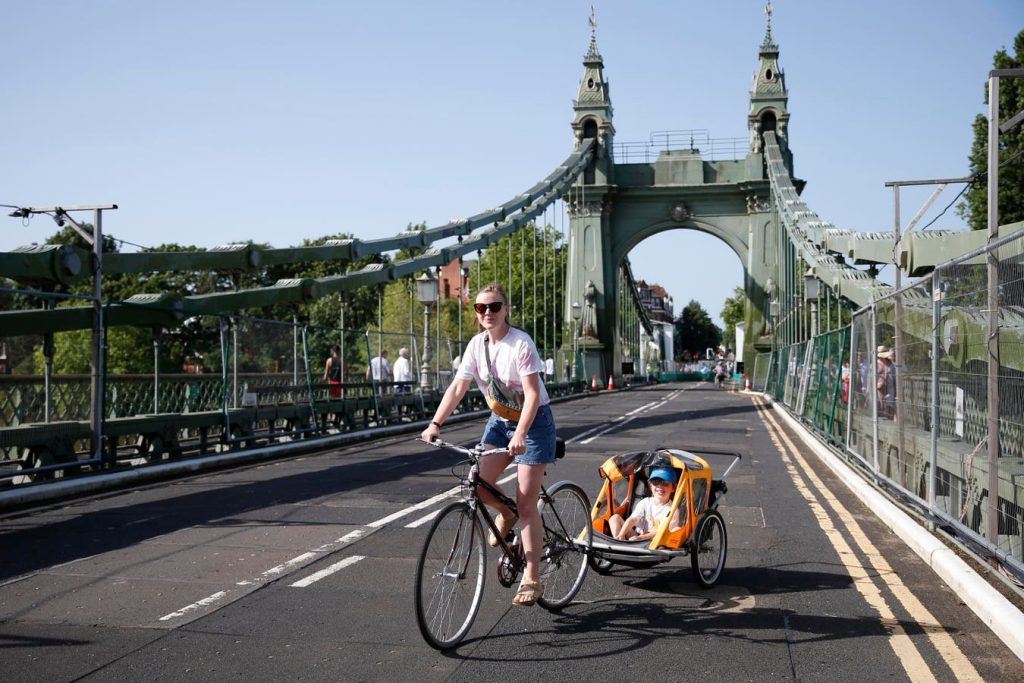The Department for Transport in the U.K. has allocated $3.6 million to allow cyclists to use Hammersmith Bridge in London, which had been closed to all traffic in 2019 due to worsening cracks caused by a heatwave. Initially, cyclists and pedestrians were permitted to use the bridge, but cyclists had to share a footway with pedestrians. The London Borough of Hammersmith and Fulham, which owns the bridge, is responsible for its maintenance. The new government funding will facilitate the introduction of a new, fully resurfaced cycle lane, which is expected to be completed by November of this year, until further strengthening work can begin.
Following the completion of the resurfacing works, cyclists will no longer have to dismount from their bikes and utilize a separate footpath, enabling them to cross the bridge quickly and separately from pedestrians. In February of this year, a temporary cycle lane was installed by the London Borough of Hammersmith and Fulham. The U.K. government aims to eventually reopen the bridge to all traffic. Leo Murray, co-director of climate charity Possible, has been advocating for the bridge to remain open to cyclists and pedestrians permanently. Murray believes that a proper cycle crossing over the Thames at Hammersmith Bridge would enable most people to make local journeys in a clean, cheap, and healthy manner, ultimately helping address London’s environmental issues.
A spokesperson for the Hammersmith and Fulham branch of the London Cycling Campaign noted that enabling active travel across Hammersmith Bridge would improve outcomes for everyone by creating quieter and safer streets on both sides while facilitating links between utilities and services in Hammersmith and residents to the south. The new funding is hoped to provide a link-up service for individuals with limited mobility that had been lacking. Hammersmith Bridge, constructed in 1887, is one of the world’s oldest suspension bridges, making repairs costly.
The investment from the Department for Transport will support the development of infrastructure that promotes sustainable and healthier transportation options for individuals in the London area, particularly cyclists. The new cycle lane on Hammersmith Bridge will enhance safety for cyclists and pedestrians, allowing for smoother and more efficient travel while reducing congestion on the bridge. The additional funding will also contribute to addressing the structural issues of the bridge, ensuring its long-term viability and accessibility for all road users.
Overall, the initiative to improve cycling infrastructure and accessibility on Hammersmith Bridge reflects a broader commitment to sustainable transportation solutions in urban areas. By investing in projects that support active travel and reduce reliance on motor vehicles, authorities can enhance the quality of life for residents, reduce carbon emissions, and promote healthier lifestyles. Continued collaboration between government agencies, local authorities, and advocacy groups will be crucial in advancing these efforts and creating a more sustainable and inclusive transportation network in London and beyond.


